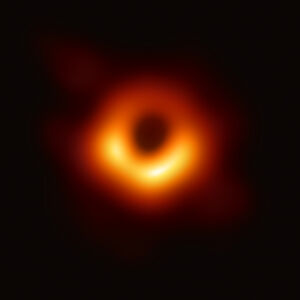
The supermassive black hole at the core of supergiant elliptical galaxy Messier 87 as despicted in the first direct image of a black hole ever taken
Summary
Black holes are notorious as one of the most contentious feats in VS debating. Due to the vague understanding of their nature among the masses, black holes are among one of the least accurately represented cosmic events in fiction, alongside the Big Bang and light speed travel. As such, much of the time, the so-called black holes rarely follow the actual mechanics of a black hole, making indexing them a dificult task.
Criteria
To give a roundout of their actual characteristics:
- Black holes are objects of extremely compressed mass;
- Black holes have a strong gravitational pull which distorts space-time and swallows even light;
- Black holes have an event horizon from which it is impossible to escape;
- Black holes are ideal black bodies (which makes them impossible to detect without outside interaction) and emit Hawking radiation;
- Black holes cannot be destroyed with brute force (because they will simply absorb all energy/matter thrown at them and grow larger);
Due to the inaccurate nature of most of their depiction in fiction, an object called a "black hole" cannot be assumed to work like an actual black hole does if it doesn't meet some of the criteria above. If said object doesn't break any of the above described characteristics, it can be safely assumed to be a black hole, but breaking them would disqualify it from being considered to be like an actual one, and instead be labelled as a "pseudo-black hole".
Calculations
Once the black hole has been proven to work like a real one, the next step is finding how much energy creating one needs. To get that, first you need to have the mass said black hole would have, which can be done with this formula:
Black Hole Mass = (c² * radius) / (2 * G)
- Where c² denotes speed of light (299792458 metres per second) squared
- Where radius denotes half the diameter of the black hole (in meters)
- Where G denotes the gravitational constant (6.67408e-11)
From this, the resulting mass is multiplied by the gravitational binding energy of the Sun (5.693e+41 Joules) to get the total energy that results from the feat.
Despite the common idea that creating a black hole should result in High Cosmos level+ due to the event horizon needing infinite energy to be able to pull in even light, this would only apply if the properties of light speed are shown to be accurate to real life physics, and thus, needs its own set of evidence to get said result.
